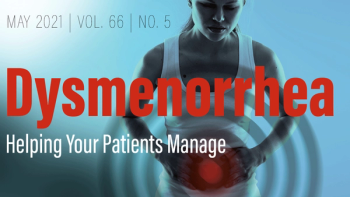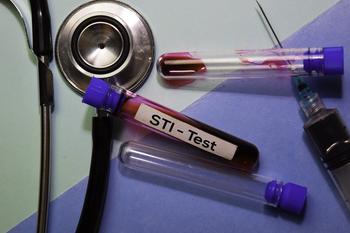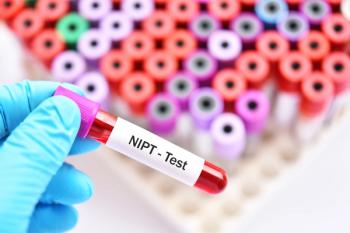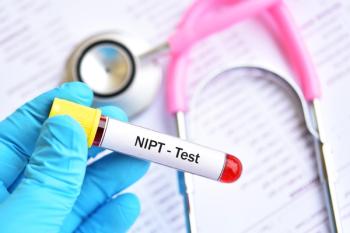
What was to blame for this fetal demise?

It was a very busy week for the Contemporary OB/GYN® team.

A new study led by Sejal Ajmera Desai, MD, MBBS, a consultant ob/gyn at the Indian Academy of Vaginal Aesthetics in Mumbai, India, found that women who received transcutaneous temperature-controlled radiofrequency treatment (TTCRF) saw substantial improvement in stress urinary incontinence (SUI), sexual dysfunction (SD), and female genital appearance. The most significant takeaway from this study for providers, according to study supervisor George Kroumpouzos, MD, PhD, FAAD, is that TTCRF is safe and effective.

Contemporary OB/GYN® Editorial Board Member Paula J. Adams Hillard, MD, reports on the Annual Clinical & Research Meeting (ACRM) of the North American Society for Pediatric and Adolescent Gynecology (NASPAG), which was held virtually on March 18 to 21. The meeting drew gynecologists who specialize in pediatric and adolescent gynecology (PAG) and pediatricians who practice adolescent medicine, nursing and advanced practice nursing professionals, and various other clinicians who take care of girls and adolescents with gynecologic problems.

Primary dysmenorrhea is a prevalent, underdiagnosed, but treatable condition.

“On a national level, it was decided that in spite of the lack of information, breastfeeding women should be vaccinated,” said principal investigator Ilan Youngster, MD, MMSc. “Thus, we decided to conduct a study to examine whether anti-SARS-CoV-2 antibodies are secreted into breastmilk and whether any infant adverse events are described.”

Breastfeeding duration among New York City Latinx mothers by their birth region significantly varies, according to a recent analysis. “Both my personal and work histories came together as motivating factors for this project,” said lead author Lauren Gerchow, MS, RN, a PhD student in nursing at the New York University (NYU) Rory Meyers College of Nursing in New York City.

Cesarean delivery is the most commonly performed surgery in the United States, with over 1 million infants delivered this way each year. Maternal morbidity and mortality rates in this country are higher in women undergoing cesarean delivery. To improve these outcomes, experts make a case for the application of several ERAS principles to obstetric-specific issues.

Contemporary OB/GYN®’s senior editor Angie DeRosa sat down with Ayman Al-Hendy, MD, and Sateria Venable of The Fibroid Foundation, to discuss the role of patient-physician collaboration in uterine fibroid treatment and management options.

What every OB/GYN needs to know to manage this complication.

Three recent pieces of legislation highlight a threat to the physician-patient relationship.

On April 9, Contemporary OB/GYN® editorial board members met with the content team and several others from our corporate offices for the annual editorial board meeting.

This month’s edition of Contemporary OB/GYN® features three peer-reviewed articles that offer in-depth guidance and analyses of key topics in ob/gyn.

This informative physician fact sheet compiles steps ob/gyns can take to reduce maternal mortality and morbidity.

Women with a history of preeclampsia were nearly 4 times as likely to have a stroke in later life compared with women without a history of preeclampsia, according to an analysis of data from the Framingham Heart Study, which was conducted from 1948 to 2016.

What to look for this week on Contemporary OB/GYN®

It's been a very busy week for the Contemporary OB/GYN® team.

Genetic factors predictive of reproductive aging also are linked to vasomotor symptoms (VMS), indicative of VMS having a polygenic architecture, according to an analysis of the Study of Women’s Health Across the Nation (SWAN) Genomic Substudy.

Poor sleep quality is linked to female sexual dysfunction, whereas good sleep quality is associated with heightened sexual activity, according to a cross-sectional analysis of the Data Registry on Experiences of Aging, Menopause and Sexuality (DREAMS).

A session of the American College of Obstetricians and Gynecologists (ACOG) 2021 annual meeting pointed to the dramatic increase in STIs in the United States and presented highlights from the updated CDC STI guidelines.

A systematic review and meta-analysis on the benefits of non-invasive prenatal testing (NIPT) for detecting hemolytic disease of fetus and newborn (HDNF) validates routing anti-D prophylaxis.

Data from successive surveys indicate that the mean age at natural menopause has increased by 1.5 years and the mean reproductive life span by 2.1 years between 1959 and 2018 in the United States.

An analysis of a large cohort of patients who chose noninvasive prenatal testing (NIPT) as a screening method for fetal trisomy 21, 18, and 13 (T21, T18 and T13) and sex chromosome aneuploidies (SCA) concluded there were extremely high detection rates and exceptionally low false positive rates.

During the 2021 American College of Obstetricians and Gynecologists Annual Clinical and Scientific Meeting, 3 experts—Kathryn Marko, MD, NCMP; Katherine T. Chen, MD, MPH; and Tamika Auguste, MD—led presentations on different types of mobile health apps and remote monitoring, as well as the role they play in patient care.

A presentation at the American College of Obstetrics and Gynecology’s (ACOG) Annual Clinical and Scientific Meeting, which started on April 30, discussed maternal mortality in pregnancy and how physicians can reduce rates.

Two leading experts provided ACOG ACSM attendees with a high-level overview on clinically valuable updates that may have been pushed to the backburner as COVID-19-related medical care dominated 2020.

If the oath “First, do no harm” is to be carried out by medical practitioners, one area in which this can truly be practiced involves the care of transmasculine or nonbinary patients who want to become pregnant or are already pregnant, according to a session from the 2021 American College of Obstetricians and Gynecologists (ACOG) Clinical and Scientific Meeting.

“When you leave populations behind from the data, you disadvantage the population that bears the brunt of the disease,” said Melissa Simon, MD, MPH, during her presentation on recommendations to improve women's health at this year's ACOG meeting.

A session held virtually at the American College of Obstetrics and Gynecology’s (ACOG) Annual Clinical and Scientific Meeting, which started on April 30, reviewed updates from its COVID-19 task force as we continue to witness the vaccine rollout.

A session held at the American College of Obstetricians and Gynecologists’s (ACOG) 2021 Annual Meeting highlighted the signs and obstacles when treating women and teens for PCOS.